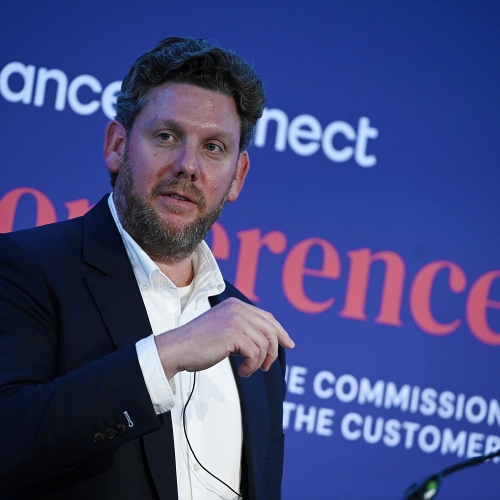Summary
The AFC European Unconference, sponsored by Alfa, recently delved into one of the most pressing challenges for the leasing and asset finance industry: managing margins in a market characterised by rising costs, shifting risks, and evolving customer expectations.
Experts from across the sector came together to explore both sides of the profitability equation—costs and income—and identified strategies to enhance financial performance and long-term resilience.
The cost side: balancing efficiency and investment
Operational expenditure (OPEX) continues to dominate the cost structure of leasing companies, with staff, risk management, and technology accounting for 90% of expenses. However, not all organisations are created equal, and cost structures vary depending on business models and market positioning. As one attendee put it, “It is about what you want to be for the market and for your clients.”
Staff costs remain a key focus, driven by inflationary pressures, wage increases (estimated at 10% across Europe), and the need for high-quality personnel. The importance of having the right people—those who can sell solutions, navigate client relationships, and ensure smooth succession planning—was repeatedly emphasised. However, technology is increasingly seen as a way to mitigate labour costs through automation and efficiency gains. For example, Société Générale Equipment Finance (SGEF) is currently undergoing a massive IT transformation to unify multiple systems across 16 countries, aiming to create scalability and efficiency, albeit at significant upfront expense.
Risk management is another critical cost area. Historically low cost-of-risk levels are starting to reverse, with fraud cases and defaults on the rise. According to the AFC European Asset Finance Outlook Survey for H2 2024, 69% of respondents anticipated a rise in bad debt, while 71% forecast increased defaults. One delegate advised focusing on specialised asset segments, arguing that niche expertise reduces exposure to risk by leveraging in-depth knowledge of asset markets and their secondary values.
Meanwhile, funding costs are once again becoming a notable concern with higher interest rates. One delegate highlighted efforts to optimise funding structures, including exploring public asset-backed securities (ABS). Despite these challenges, there was optimism about maintaining financial stability through disciplined forecasting and cash flow management.
The income side: adding value to justify margins
Inflation may drive up costs across the board, but leasing margins remain stubbornly flat. One attendee noted that while operational expenses escalate with inflation, margins often fail to keep pace, creating a profitability squeeze. This underscores the need to rethink pricing strategies and explore additional revenue streams.
Many participants agreed that the solution lies in offering value-added services alongside traditional leasing products. By bundling services such as data analytics, regulatory reporting, and asset monitoring, companies can justify higher margins while building stronger client relationships. A deep understanding of client needs and cost drivers is crucial to identifying opportunities for profitability, noted one delegate.
The integration of technology and services was also highlighted as a potential game-changer. For instance, offering as-a-service products that include ongoing maintenance, usage tracking, and compliance support not only generates new income streams but also protects against risks like fraud and operational inefficiencies. By leveraging data more effectively, lease companies can offer insights that customers are willing to pay for—turning compliance and reporting from a cost into a value proposition.
One attendee illustrated this approach by emphasising the importance of pricing strategies that align with customer value. “You can’t just put margins up—you have to offer a value-added service or more comprehensive solutions to justify higher rates,” he explained. This sentiment was echoed by another delegate, who stressed that “if it has value, it has a price,” warning against squeezing margins to the detriment of long-term vendor and customer relationships.
Specialisation vs. scale: finding the right business model
One of the recurring themes was the need for leasing companies to identify and commit to the business models where they have the most expertise. Specialisation, particularly in niche asset classes, allows companies to manage risk more effectively and command higher margins. One delegate noted that companies with specialised asset knowledge are better equipped to navigate secondary markets and reduce exposure to default risks.
However, achieving profitability through specialisation often comes at the expense of scalability. As one attendee pointed out, growth often requires significant investment in both technology and personnel. To bridge this gap, companies must adopt a dual approach: integrating scalable digital solutions while maintaining the human expertise needed to deliver tailored services.
One delegate suggested that standardisation is essential for competing with banks, which benefit from lower funding costs. Lease companies need streamlined processes and a customer-centric mindset to differentiate themselves in the market. However, achieving this balance is no small task—standardisation often increases IT costs, and creating long-term client relationships requires sustained investment in people and technology.
A positive outlook amid challenges
Despite the challenges discussed, there was a strong sense of optimism among attendees about the industry’s prospects for 2025. The departure of several lessors from the UK market, including ABN Amro and Hampshire Trust, has opened up opportunities for remaining players to increase rates slightly. Participants rated their confidence for a successful 2025 at 8 out of 10, buoyed by a belief in their ability to adapt and innovate.
The consensus was clear: the path to profitability lies in striking the right balance between cost control and value creation. Whether through technology investment, specialised asset strategies, or enhanced client relationships, the industry is well-positioned to navigate the evolving market landscape. As the discussion highlighted, those who embrace change and focus on delivering integrated solutions will be best equipped to manage the margin challenge and seize opportunities for growth.









